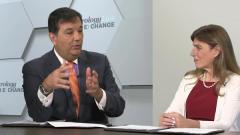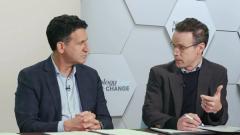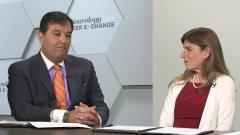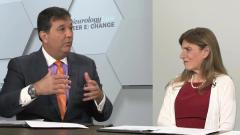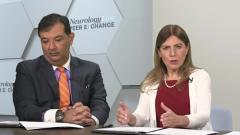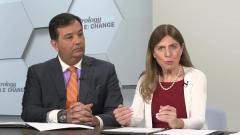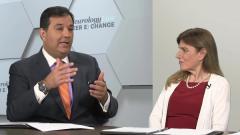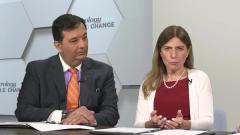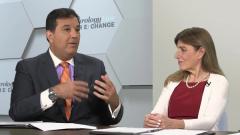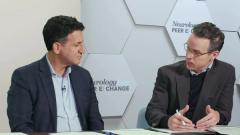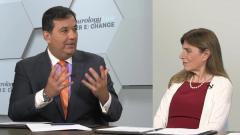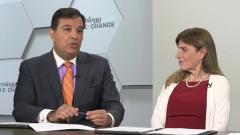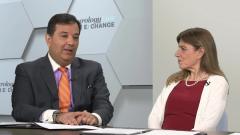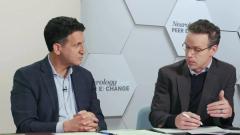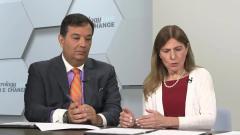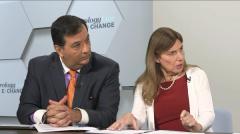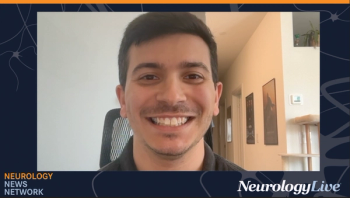
Future Outlook for Alzheimer’s Disease
Drs Atri, Cohen, Sabbagh and McDade share their enthusiasm and optimism about the future outlook for Alzheimer’s disease.
Episodes in this series

Marwan Sabbagh, MD: We’re going to wrap things up but give an outlook for Alzheimer disease. I want each of you, starting with you, Dr Atri, and we’ll go this way, talk about what are your thoughts for the outlook for 2023 in Alzheimer disease, and what should a neurologist know about impact and removal [of amyloid] on various aspects and its implications?
Alireza Atri, MD, PhD: The outlook is very positive. We are at possibly the end of the beginning, right? Because we have biomarkers. Honestly, that’s the major part. After 20 years of working on different aspects of the amyloid cascade, especially with the Clarity AD study now, it’s definitive. This was a clear, positive study that removing amyloid, bringing it down, translates to clinical benefit and can have effects downstream. We need to build on that. Part of that is going to be having a better and more timely diagnosis. That’s something that doesn’t happen. We know that our clinician colleagues don’t feel comfortable, or there’s a perception that Alzheimer disease is a normal part of aging. It’s not. Dementia and chronic impairment are common, but not normal. In the same way that an individual doesn’t go to a clinician and say, “Gosh, I’m having chest pain.” And they say, “I’m having chest pain too. You get old, you have chest pain.” No, you work it up. This is what’s going to change. Between the biomarkers and other things, it’s not even about giving drugs, it’s about that timely and accurate diagnosis so you can have a patient-centered approach, where individuals at the highest abilities and capacities can make their decisions. Whether they want to do lifestyle [modification], whether they want to go in a clinical trial, whether they want to do both. Whether they want to get on standard therapy or add the new therapies.
There’s a rational basis for hope. Not for a cure tomorrow, that’s somewhere down the line. But that we could possibly be changing the trajectory of this disease if we intervene early enough and do it in a multifactorial way. In the next 10 to 15 years, again, my horizon is a bit longer than that, because it’s going to take time for us to understand these conditions and bring these drugs into practice. But please don’t give up on the patients. Listen to them. And if you’re not sure, refer. Refer to a neuropsychologist. Refer to your colleagues. There are things that can be done. And why diagnose in primary care? Because the patients depend on us. They trust primary care clinicians. That’s their quarterback, right? They listen to them. And they’re putting the trust in them, and we shouldn’t be nihilistic about it because there are things we can do. The message is hope. There’s rational basis for hope.
Marwan Sabbagh, MD: Dr Cohen?
Sharon Cohen, MD, FRCPC: Yes, I agree with everything Dr Atri said. Having the Clarity AD readout does not just provide hope to us as researchers, but it also destigmatizes the disease to some extent. Patients are listening, and they’re saying, “Is that drug going to be for me?” They’re going to go to their doctor. They’re not going to let symptoms smolder. There’s a lot of variability out there, but people will want to know, is there now something? And maybe it’s not something you hide at home, but there’s a drug that might help. The expectation is that it will be approved. This is a hopeful time. I totally agree with you.
We’ve got a long way to go still. But if we can keep people at a mild stage of disease in the community, having good quality of life longer, that is hugely important. That message has to resonate, and I think it will. We’ve had a bit of divisiveness in our field as well, and I have a feeling from CTAD 2022 [Clinical Trials on Alzheimer’s Disease annual meeting] that people are coming together a bit more, finally. And not fighting so much about the amyloid hypothesis. Now we have a clear result. Maybe it doesn’t apply to all anti-amyloid drugs, certainly not. But we have an anti-amyloid agent that has clear, consistent results, and we can move forward from some of the controversy and get on to the business of testing combination therapy and sequential therapies, and moving plasma biomarkers eventually into the clinic that will facilitate diagnosis and probably monitoring. It’s a hopeful time. Is it going to be 15 years? I’m impatient, so let’s say in 5 or 10 years I think we’ll have a substantially different look to Alzheimer disease.
Marwan Sabbagh, MD: I am also excited and optimistic. Finally, we’re going to make Alzheimer disease go from a terminal disease, as we know it, to a chronic disease. I like the end of the beginning. That’s No. 1, I like that we now moving in the direction of making it a chronic disease. We’ve done this with diabetes, with HIV, with multiple sclerosis, so it can be done. The second thing is, 2023 is going to be about deployment of lecanemab. We’ve just had an announcement, we’re excited. But now the rubber meets the road. We have to bring this to the clinic and get patients going, get them clinically characterized, get them biomarker confirmed. Get them in the chair, get the treatments, and see what happens. Get it approved, get it available. There are a lot of steps. We can take a victory lap at the end of 2022, but I think 2023 is about now rolling it out. All 4 of us will be busy in that regard. But it also finally is that we’ve proven that targeting amyloid makes sense. There’s skepticism and a lot of pushback, but we can now say, with a phenomenon known as directional concordance, the biomarker direction and the clinical direction are going in the same direction. We’re starting to see now that that is no longer an unsure thing, but more definitive.
Eric McDade, DO: Yes, I agree with everything. What I would say is, at least with the first step, as you said, we can take a victory lap at the end of 2022. We presume, again, there’s an assumption that lecanemab will be approved. At the time we’re having this discussion, it’s not. With that in mind, and with some optimism and hope for donanemab, the trial that will be concluding later in 2023, the reality is these drugs will be available. One of the things we do need to do, though, in order to ensure we keep moving in the right direction, is that these drugs are used appropriately too. It has to be clear that we are making important steps, important strides. But we have to know what’s the right population for this, so that patients see the effect of this drug, they detect it, they live it. That’s going to help us continue to understand this is a pathway we keep going down, while we then expand. For me, the outlook is extremely promising, and I have great optimism right now. There’s a lot of reservation because of how complicated this is. But we understand the disease in ways that we haven’t ever before. We continue to develop technologies that help us understand it even better. The treatment pipeline as we mentioned is as broad as it’s ever been. And we’re evolving in how we do these trials to try to make it so it’s much more likely that we can get to the next step faster. But we still have to evolve and do this in a smarter way so we can test more drugs, more quickly, and get people better.
Marwan Sabbagh, MD: I want to thank you Dr Atri, Dr Cohen, Dr McDade, for joining me today. And thank you for watching this NeurologyLive® Peer Exchange. If you enjoyed the content, please subscribe to our e-newsletters to receive upcoming peer exchanges and other great content right in your inbox. Thank you all. I hope it was a productive time for you as well.
TRANSCRIPT EDITED FOR CLARITY
Newsletter
Keep your finger on the pulse of neurology—subscribe to NeurologyLive for expert interviews, new data, and breakthrough treatment updates.

